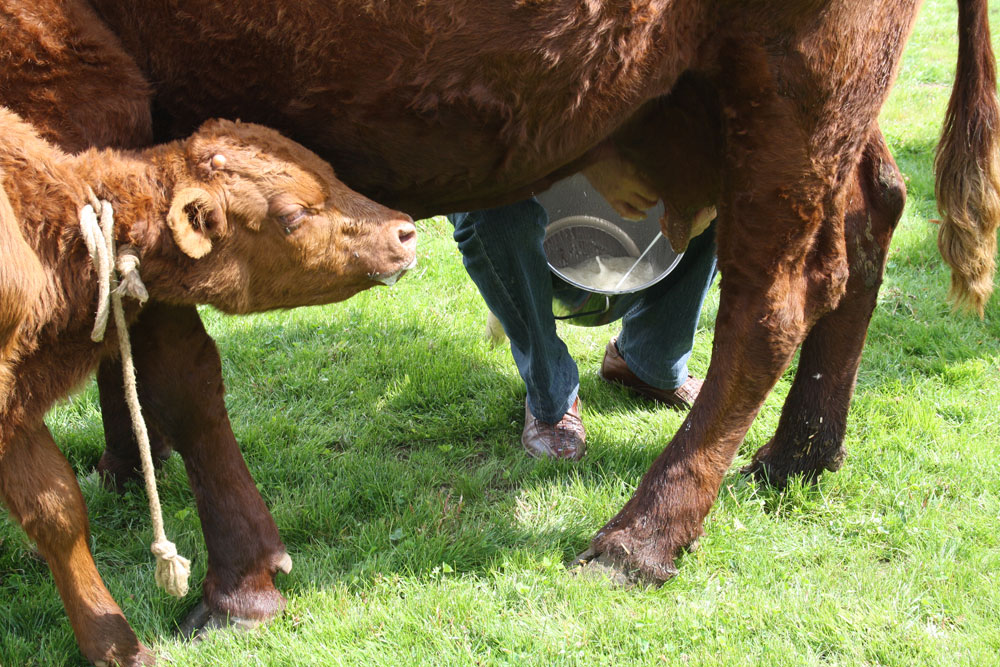
Cows were first domesticated around 8000BC in the Middle East and India. The first products to come from this domestication were the traction and milk transformed into cheese.
- La Vosgienne : this breed has a speckled black and white coat. Its milk is the basis of the Munster cheese. It is a mixed race, which gives a large quantity and quality of milk (around 4400kg a year). It is a breed of exceptional rustic character: excellent walker, supports a change in temperature, accommodates to a difficult relief and eats coarse forage. It is perfectly adapted to the mountains. It has good fertility on a difficult.
-L'Abondance: this is a mixed breed, a good dairy cow, but also good for meat. The production of milk is around 5700kg per lactation per 302 days for the highest performing cows, and 5144kg on average in 2006. The milk is rich in fat and proteins, and there is a good balance between the two. The level of butyrous is on average between 37.0 and 37.4 and the protein between 32.9 and 33.1. The ratio between the butyrous/ protein level is 1.13, which is ideal for making cheese. This milk is the basis for AOC cheeses; reblochon, abondance, tome des Bauges and beaufort.These cows are favoured for their breeding qualities: their rustic quality, their ability to walk distances, their resistance to thermal altitudes, calving abilities, their long lifespan and ability to eat coarse forage. When the dairy farmers of Savoy found it difficult to sell their cheese, they crossbred this cow with bulls of a slaughter cow breed. These cows raise their calves in the stable, and then the trait begins in summer to make the cheese of the mountain summer pasture, which is the most famous and most expensive.
- The Tarine or Tarentaise: This breed is classed as a dairy cow. It is good at milk production and gives a milk which is rich in fat. It provides 4800kg for 292 lactations per year. Its milk is used to produce some AOC cheeses: Beaufort, tome des Bauges, reblochon or abondance and IGP cheeses like emmental de Savoie or tomme de Savoie.As for meat, it gives an excellent yield that’s to the fineness of its bones. It is a rustic breed, with a long lifespan and is well adapted to the mountain pastures and transhumance; it is a good walker and resists the cold and the heat. It can be fed on coarse forage and is resistant to illnesses.